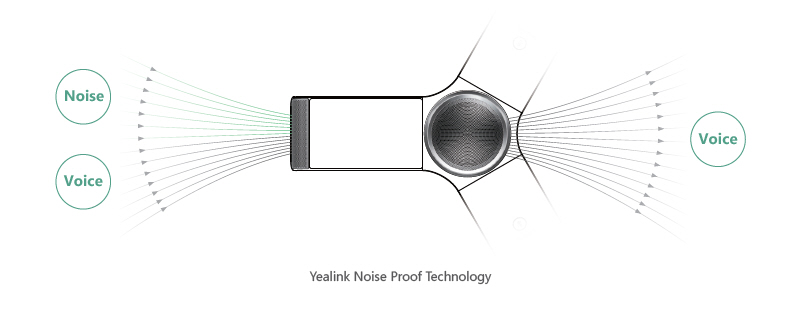Transitioning to a home office setup has become a necessity for many professionals in today's ever-evolving work environment. One of the most crucial components of this transition is ensuring your communication systems are efficient and reliable. That's where VoIP (Voice over Internet Protocol) services come into play. Whether you're managing a small business or working as an independent contractor, adapting your home office to incorporate VoIP can significantly enhance your communication capabilities. In this article, we'll explore the ins and outs of switching to VoIP services, addressing everything from setup and features to benefits and troubleshooting.
Understanding VoIP Phone Service
What is VoIP?
VoIP stands for Voice over Internet Protocol. It’s a technology that allows you to make voice calls using the internet instead of traditional phone lines. This means you can talk, leave voicemails, and even hold video conferences without relying on conventional telecommunication infrastructure.
How Does VoIP Work?
The magic behind VoIP lies in its ability to convert voice signals into digital data. When you speak into a VoIP-enabled device, your voice is digitized and transmitted over the internet as data packets. These packets are then reassembled at the other end into audio signals that can be heard by the recipient.
Benefits of Using VoIP Phone Service
Cost-Effective: Traditional phone services often come with hefty fees, especially for long-distance calls. With VoIP, most calls—especially those made over the internet—are either free or considerably cheaper.
Flexibility: VoIP services allow you to make calls from anywhere with an internet connection. Whether you're at home or traveling, staying connected is easier than ever.
Scalability: As your business grows, so do your communication needs. Upgrading a VoIP system is typically simpler than scaling traditional phone systems.
Advanced Features: Many VoIP providers offer additional features such as call forwarding, voicemail-to-email transcription, video conferencing capabilities, and more at no extra cost.
Adapting Your Home Office with a Smooth Switch to VoIP Services
Transitioning to a home office equipped with VoIP services might seem daunting at first glance; however, it's relatively straightforward if approached methodically. The following sections will guide you through this process step by step.
Assessing Your Current Communication Needs
Before diving headfirst into setting up your new system, it’s essential to evaluate what you need from your communication tools:
Call Volume: Consider how many calls you typically make or receive daily.
Features Required: Do you need video calling? Conference calls? Call recording?

Internet Speed: Is your current internet connection robust enough to support high-quality voice calls?
Choosing the Right VoIP Provider
With so many Business Phone Service options available on the market today, choosing the right provider can feel like searching for a needle in a haystack:
Research Providers: Look for well-rated companies that specialize in business communications.
Compare Plans: Review different pricing packages and determine which offers the features suited to your needs.
Read Reviews: Check out customer experiences online; they can provide insight into reliability and customer service quality.
Setting Up Your Home Network for VoIP Services
A solid network setup is crucial for utilizing any type of digital communication effectively:
1. Optimize Your Internet Connection
VoIP relies heavily on having high-speed internet access:
- Ensure you have a broadband connection of at least 1 Mbps upload/download speed for optimal performance. Consider upgrading your router if it’s several years old; newer models often provide better performance and range.
2. Quality of Service (QoS) Settings
If multiple devices share your network bandwidth:

- Configure QoS settings on your router to prioritize voice traffic over other types of data. This ensures call clarity and minimizes interruptions during conversations.
3. Wired vs Wireless Connections
While wireless connections offer flexibility:
- A wired connection through Ethernet cables generally provides more stability and less latency.
Hardware Requirements for Switching to VoIP Services
To make the switch smoothly, consider investing in some necessary hardware:
VoIP Phones vs Traditional Phones
You may wonder whether it's worth investing in specialized equipment like IP phones:
- IP phones connect directly to the internet and often come with advanced features built-in. Alternatively, regular phones can also be used with an adapter known as an ATA (Analog Telephone Adapter).
Headsets and Accessories
For those who spend long hours on calls:
- Investing in comfortable headsets with noise-canceling capabilities can significantly improve call quality and reduce distractions.
Installing Your New VoIP System
Once you've selected a provider and gathered all necessary equipment:
1. Follow Provider Instructions
Most providers will give detailed instructions tailored specifically for their service:
- Ensure that you follow these carefully to avoid potential hiccups during installation.
2. Test Your Setup
After installation, conduct extensive testing before fully transitioning from traditional phone systems:
- Make test calls both locally and internationally if applicable. Assess sound quality; adjust settings as required based on performance feedback from users.
Training Yourself & Your Team on Using VoIP Services
Whether you're solo or part of a larger team:
1. Familiarize Yourself with Features
Take time exploring all available functionalities within your new system—most providers offer tutorials or user manuals online.
2. Hold Training Sessions
If you're part of a team transitioning together:
- Organize group training sessions where everyone learns about how best to utilize new tools effectively.
Troubleshooting Common Issues When Adapting Your Home Office with a Smooth Switch to VoIP Services
Even technology can sometimes throw curveballs! Here are common issues users face along their journey toward embracing full-fledged communication freedom via voicing—pun intended!
1. Poor Call Quality
Slow internet speeds may lead down this path; first steps include checking bandwidth usage across all devices connected simultaneously; restricting usage during important conversations may help alleviate strain on networks!
2. Dropped Calls
Frequent disconnections could signal hardware problems or unstable wifi connections—consider switching back temporarily until permanent fixes are implemented properly!
FAQs About Adapting Your Home Office with a Smooth Switch to VoIP Services
Q1: What type of internet connection do I need for good quality VoIP service?
A: You should aim for high-speed broadband (at least 1 Mbps upload/download). The faster and more stable your connection is, the better quality calls you'll experience.

Q2: Can I use my existing phone number when switching to VoIP?
A: Yes! Most providers offer number porting services allowing you seamlessly retain existing numbers without missing any important contacts!
Q3: Do I need special equipment for using VoIP services?
A: While it's possible just using existing phones via ATA adapters works fine too – dedicated IP phones tend provide enhanced functionality which could streamline workflow within business settings!
Q4: How secure are my conversations over Voice over Internet Protocol?
A: Good question! Reputable providers take encryption seriously ensuring confidentially maintained throughout communications reducing vulnerability against malicious attacks!
Q5: Will I still be able reach emergency services while utilizing this technology?
A: Absolutely! Dialing emergency numbers remains functional under most circumstances although keep local regulations regarding E911 compliance mindfully tracked depending upon geographic location too!
Q6: Can I use video conferencing tools alongside regular calling functionalities offered by my chosen platform?
A: Definitely! Many modern-day platforms integrate smoothly allowing simultaneous use between various modes enhancing overall productivity levels efficiently across teams globally without skipping beats!
Conclusion
In summary, adapting your home office with a smooth switch to VoIP services can truly revolutionize how you communicate both personally & professionally alike! With careful consideration surrounding needs assessments followed up by diligent research around available options—you’re bound not only find solutions tailored perfectly fit but also enjoy significant cost savings long-term too! So take that leap towards improving connectivity today—your future self will thank ya later!